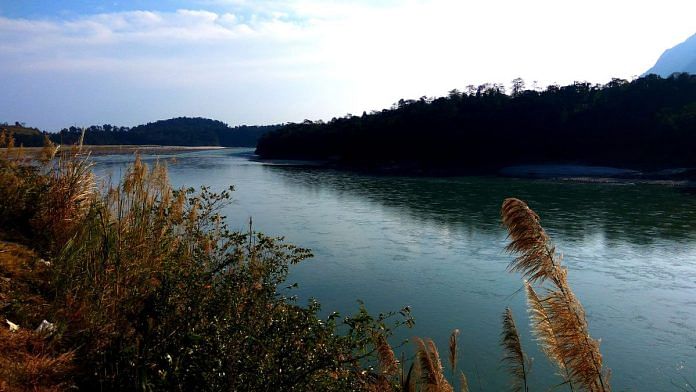New Delhi: Even as China announced Friday that it is starting construction on one of the world’s largest hydropower dam projects over the Brahmaputra river in Tibet, where it is known as Yarlung Tsangpo, India’s counter to it—the proposed 11,200 MW Upper Siang multipurpose project in Arunachal Pradesh—remains delayed with stiff opposition from locals.
Aiming to expedite the project, the Centre has now come up with a Rs 350 crore Special Development and Livelihood programme, along with the Arunachal Pradesh government, to win over the local residents’ trust before going ahead with the pre-feasibility study, three people aware of the development told ThePrint.
Flowing through Tibet, the Yarlung Tsangpo enters India in Arunachal Pradesh, where it is known as Siang, the main tributary of Brahmaputra. Along with Siang, other tributaries, including Dibang and Lohit, join the Brahmaputra in Assam.
While the Union Ministry of Jal Shakti is funding the project, the state government will implement it on the ground, a person familiar with the matter said.
On 21 May, residents of Beging, a small village downstream of Siang, had stopped a team of National Hydroelectric Power Corporation (NHPC) officials from conducting pre-feasibility tests at Parong, one of the three potential sites identified for the dam. The other two alternative sites are at Dite Dime, 8 km upstream of Siang river, and Ugeng in Upper Siang.
NHPC, the state-owned power firm, has been tasked with preparing the pre-feasibility report and detailed project report. Based on the pre-feasibility tests, which will assess the geology at the three possible sites, NHPC will finalise the final location.
The villagers had damaged the equipment, including drilling machines brought by the NHPC team when they had arrived at the Parong site, forcing them to retreat. The monsoon followed soon after, which put a stop to all construction-related work till at least September.
Making use of this lean period, the Centre and state government want to proceed with their public outreach, aimed at gaining the local residents’ trust. A second person aware of the developments told ThePrint that the developments around the Siang project are being closely monitored by the Prime Minister’s Office. “The Jal Shakti ministry will shortly approve the Rs 350 crore required for the programme. There is a growing realisation that without the locals’ support, it will be difficult to move forward. There will be unnecessary delays,” the person said.
The Development and Livelihood programme will cover 26 villages in Siang and Upper Siang districts, who will be partially or fully affected by the dam.
The second person quoted above said that as part of this programme, the residents will be trained in horticulture activities, animal husbandry, handicraft and bamboo crafting, and honey bee keeping, and so on. Some of the villagers will also be assisted in converting their homes into homestays for tourists.
“Several activities have been planned to skill the locals, provide them equipment, etc. to help the people of submerged villages. The training will ensure that they are gainfully employed once they are resettled elsewhere from their villages once the dam construction starts,” the person said.
The programme will cover approximately 10,000 people, including 5,000 women, the first person said, adding that the government will also help in constructing hospitals and schools in the areas that these villagers will be resettled in.
The NHPC has also been told by the central and state governments to hire a public relations agency to disseminate information about the benefits that will accrue from the project once it is completed.
A state government official told ThePrint that this is not the first time that the Centre has planned such confidence-building measures. “Two years ago also, the Centre had mooted a proposal to develop three model villages affected by the project with Rs 161 crore funds. However, the programme never took off,” the official said.
Ever since China announced that it will construct one of the world’s largest hydropower dams at a cost of $170 billion last December, there have been concerns about its likely impact in downstream areas in India, including Siang.
Though the Siang Upper multipurpose storage project was proposed long back, it has seen humongous delays. The Centre has not been able to identify the dam site yet amid stiff opposition from the people over its adverse impact on the environment and their livelihoods.
The Centre began pushing the project again after reports about the 60,000 MW hydropower dam on Yarlung Tsangpo. The dam will reportedly be bigger than the other mega dam China has built—the Three Gorges dam on the Yangtze river. It is expected to generate 300 billion kilowatt-hours of electricity.
(Edited by Mannat Chugh)






